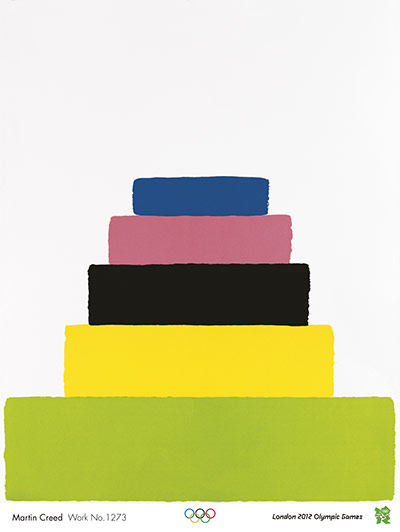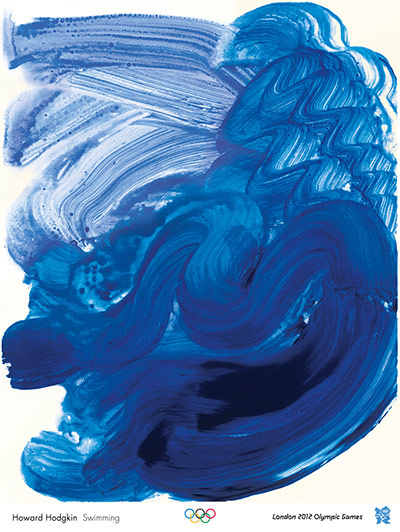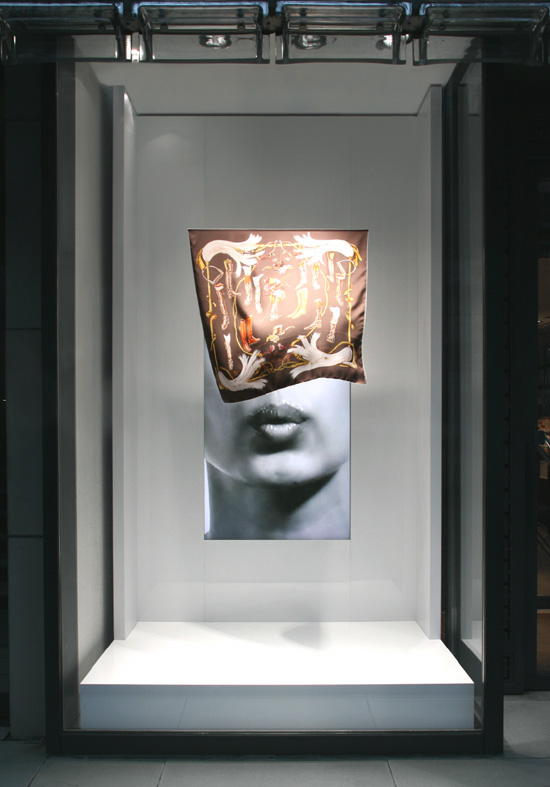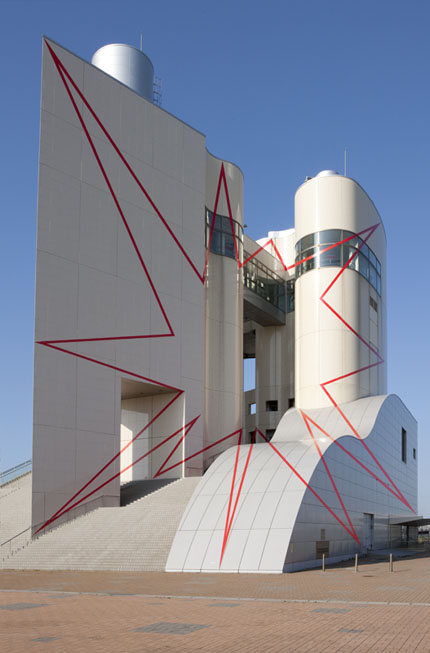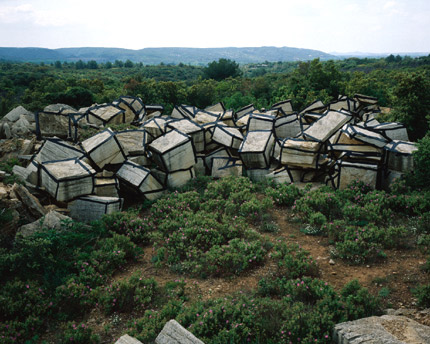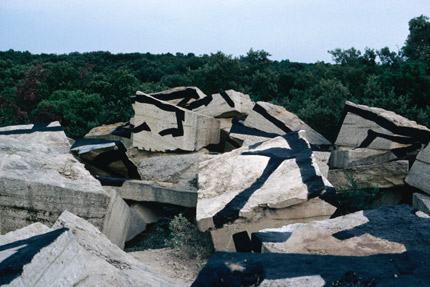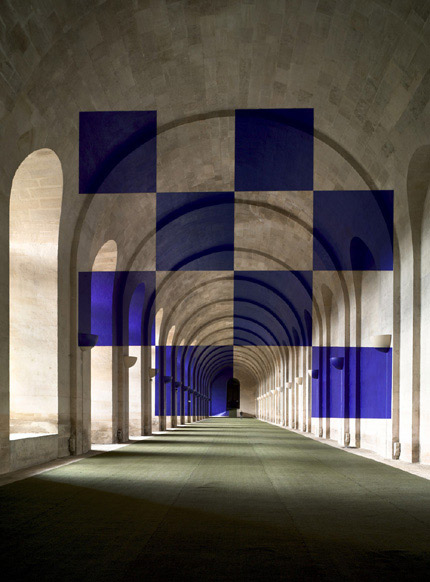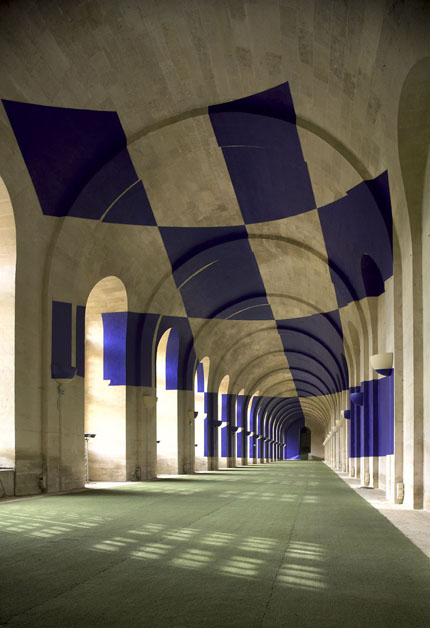click image to enlarge
On Thursday I am flying out of Copenhagen Airport to Dubai International Airport, en route to an idyllic holiday in New Zealand. Dubai International's Terminal 3 building is one of the largest buildings in the world by floor space - and here is how the airport looked in 1965.
December 4, 2011
November 29, 2011
Share and Share Alike


Animals upon each other, an image from a wall of an old shoemakers in Santiago, Chile / James Franco wearing a Sal Mineo t-shirt, as part of his project Rebel at Art Basel Miami in collab with Ed Ruscha, Douglas Gordon, Paul McCarthy, Harmony Corine (who took this photo) and others / a 1972 postcard of 'Kvarteret Korpen', a street block made famous by Malmö's resident auteur (and my now favourite director) Bo Widerberg in his 1963 film of the same name. The original 1930's block was torn down and this seaweed green and dirty white monstrosity was erected in its place. Every block in Malmö is named, Kvarteret Korpen meaning 'The raven block/quarter'. My apartment is only two blocks up the road in Kvarteret Kråkan' (the crow block) / Pablo Picasso in a backwards bull head /
If I could still share things on Google Reader, maybe I would have shared these. Just a collection of images that have caught my eye, or reflect my surroundings and thoughts on things
November 27, 2011
November 24, 2011
November 23, 2011
The Story of a Crime

Two book covers from the Martin Beck series, collectively titled 'The Story of a Crime'. Both covers are almost opposites, one a watercolour, the other and photograph; Roseanna showing just the head, while The Man Who Went Up In Smoke shows a business suit in motion, sans body - it wafted away with the title.
The writing duo of Maj Sjöwall and Per Wahlöö each wrote alternate chapters for every book, a sort of collaboration I find particularly amazing - the ability to create characters, from the brains of two people, and keeping a believable continuity to their personalities.
I wonder if you can tell which chapters are written by whom? Did Maj Sjöwall take the odd numbers, and Per Wahlöö the even? Did they switch that around every book, so as not to give the game away? There is something pleasingly rounded and symmetrical about the whole process, in the way I find happiness in every Tintin book being 62 pages long.
November 13, 2011
Gold, Silver, Bronze (in no particular order)
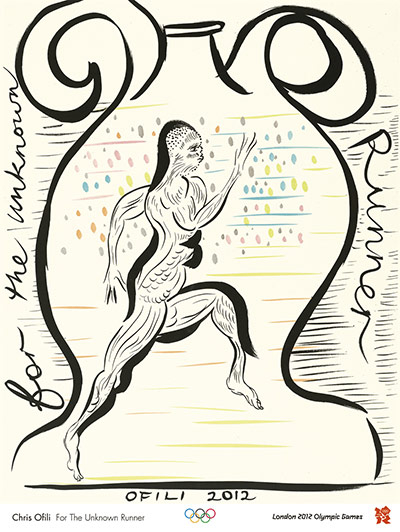
Out of the twelve official posters by some of Britain's leading artists for the 2012 London Olympics, these three would be gracing the podium, in no particular order. As someone who naturally seems to view things in relation to their surrounds, I automatically gravitated towards the posters I not only aesthetically preferred but also appreciated how they hung together, creating pleasing contrasts of straight lines, fluid paint, and varieties of movement.
Chris Ofili - For The Unknown Runner / Martin Creed - Work No. 1273 / Howard Hodgkin - Swimming
November 12, 2011
Orange
Today I spent up large at the small record/comic book store by Lilla Torg, coming home with a selection of 9 LP's and 3 45's. The three I found for myself appear to have a sort of orange theme running through them.
Sometimes I forget how much I enjoy shopping for records - I think I had grown weary of it in recent months because I never seemed to find anything, and would always get so flustered at record shops because I could never decide what I was in fact looking for. There is nothing so disheartening as flicking through scores of records and finding nothing piquing your interest. Now I am excited about expanding my collection again, hunting for albums in Malmö and New Zealand, and exploring different music genres.
The Walker Brothers - Images (1967) / Stan Getz & João Gilberto - Getz/Gilberto (1964) / Bob Dylan - Lay Lady Lay b/w I Threw It All Away (1969)
October 30, 2011
Imperial Interiors
From top to bottom:
Hōmei-Den / Kiri-no-Ma / Nishidamari-no-Ma / Chigusa-no-Ma / Higashidamari-no-Ma /
Five views of interiors of the Meiji-era Tokyo Imperial Palace, before it was destroyed in the fire-bombing raid by the Allied forces on 25th May, 1945.
October 26, 2011
a short cameo
This time last week I was about to start playing a few choice morsels of music in a small, rather unnecessary effort to assist Kris with djing at the Ganglions gig at Debaser here in Malmö. Kris was playing until around 3am and so had a playlist reaching over 100 songs. I struggled to find 29 songs that I thought complimented each other well enough to be played, and always seem to end up making djing out to be more stressful than it actually is. In the end, I felt my 29 songs were just the right amount for my brief cameo behind the decks between the bands, and a little thereafter.
The songs I played, in no particular order:
The songs I played, in no particular order:
The Band - He Don't Love You (And He'll Break Your Heart)
Love - Can't Explain
The Longboatmen - Take Her Anytime
Lee Hazlewood & Suzi Jane Hokom - Califia (Stone Rider)
David Bowie - And I Say To Myself
The Miracles - Way Over There
The Rooks - Bound to Lose
The Shags - Don't Press Your Luck
The Malibus - Leave Me Alone
Neil Diamond - Girl You'll Be a Woman Soon
Fleetwood Mac - You Make Loving Fun
Tommy James & The Shondells - Crystal Blue Persuasion
The Trolls - Are You the One
The Four Tops - Baby I Need Your Loving
Veronica Falls - Bad Feeling
Normie Rowe - Tell Him I'm Not Home
Neil Young - Cinnamon Girl
Look Blue Go Purple - Safety In Crosswords
The Rolling Stones - Under My Thumb
Paul Messis - What Am I Going to Do
Sonny & Cher - You Don't Love Me
The Rare Breed - Beg, Borrow, And Steal
Blondie - Pretty Baby
Duane Eddy & The Rebelettes - My Baby Plays The Same Old Song On His Guitar All Night Long
The Eighth Day - How Can I Stop Loving You
The Majestics - (I Love Her So Much) It Hurts Me
Randy & The Radiants - My Way Of Thinking
The Rokes - Piangi con me
Glen Campbell - Guess I'm Dumb
October 12, 2011
Facade
Designer Tokujin Yashioka created this window display for Maison Hermès for the winter of 2009. A black and white video of a closely cropped woman's face as she gently exhales - while a hanging Hermès scarf billows in sync with the imaginary air, due to a stealthily concealed fan.
A wonderful illsion of life and movement which shifts the focus from the fabricated nature commonly associated with the silver screen, into a new semblance of reality; perhaps a literal, physical manifestation of the idea of 'breathing new life' into something.
in fact, according to the man himself:
"on designing a window-display of Maison Hermès, I intended to express people’s daily 'movements'
with a suspicion of humor. there are moments when I perceive a hidden presence of a person in
the movements born naturally in daily life. I created a design where one can perceive someone
behind the scarves as if life were being breathed into them.
the window is designed with an image of woman projected on to a monitor. the scarf softly sways
in the air in response to the woman’s blow."
I am always impressed by how as colloquialism, pun or play on words can, instead of just being a one-trick pony, manifest itself into a multi-faceted, layered work. This idea is something I aspire to achieve with my own work and my own incorporation of wordplay therein.
quote via
October 9, 2011
Great Scott

Three photographs taken by Robert F. Scott on his ultimately fatal expedition to Antarctica, racing the Norwegian Roald Amundson to the South Pole across the desolate and uncompromising, yet epic and sublime landscape.
Scott was an amateur photographer taught the technical basics by the expeditions professional, Herbert Ponting, so Scott could document the final trudge to the Pole for scientific (and now, historic) purposes. A collection of Scott's photographs have recently been rediscovered and compiled into a book 'The Lose Photographs of Captain Scott' by David M. Wilson, incidentally the great-nephew of Dr Edward Wilson, member of the Terra Nova Expedition.
They make me feel an astonishing sense of loneliness and isolation that I have grown to associate with rocks, ice, islands and the colour white.
some brief descriptions of the above photographs, via The Guardian
1. Dr Edward Wilson sketching on the Beardmore Glacier, lunch camp, 13 December 1911
Wilson is seen here sitting quietly, sketching. He was one of the last artists in the great expedition tradition in which the pencil was the main method of making records. He produced many yards of accurate geographical drawings, as well as extensive notes and sketches of anything of scientific interest. Here he is drawing the mountain ranges along the Beardmore Glacier, from Mount Elizabeth (left) to the Socks Glacier and Mount Fox (right).
This panorama is the finest example of Scott's mastery of his camera, gained on the march in extreme conditions. The combination of action and repose – illustrative of Scott's unique pictorial understanding – encapsulates the contrast between the Antarctic's majesty and man's diminutive presence
Wilson is seen here sitting quietly, sketching. He was one of the last artists in the great expedition tradition in which the pencil was the main method of making records. He produced many yards of accurate geographical drawings, as well as extensive notes and sketches of anything of scientific interest. Here he is drawing the mountain ranges along the Beardmore Glacier, from Mount Elizabeth (left) to the Socks Glacier and Mount Fox (right).
This panorama is the finest example of Scott's mastery of his camera, gained on the march in extreme conditions. The combination of action and repose – illustrative of Scott's unique pictorial understanding – encapsulates the contrast between the Antarctic's majesty and man's diminutive presence
2. Ponies on the march, 2 December 1911
As the pony column disappears into the distance, the "sledgeometer" on the final sledge clicking the mileage as it goes, the straggle of ponies becomes veiled in the icy wilderness. Many of the men in this image would return, but not all. None of the ponies would: within a few days they would be shot.
As the pony column disappears into the distance, the "sledgeometer" on the final sledge clicking the mileage as it goes, the straggle of ponies becomes veiled in the icy wilderness. Many of the men in this image would return, but not all. None of the ponies would: within a few days they would be shot.
3. Camp under the Wild Mountains, 20 December 1911
Scott took this impressive image to capture the interesting geological features around Mount Wild. On the sledge in the camp, two figures can be seen sketching. On the left, Apsley Cherry Garrard is drawing the view towards Mount Buckley; on the right, Edward Wilson is making detailed sketches and notes of the geological features so clearly visible in Scott's photograph. The other figure that can be seen is probably Birdie Bowers, who died with Scott on their return from the polar expedition, just months later. Scott returned his camera to base with the First Supporting Party as they departed from the top of Beardmore Glacier towards Cape Evans. Critically, this lightened the sledge loads for the push across the Polar Plateau to the South Pole. Bowers, with his lighter camera, was chosen by Scott to become the photographer for the final pole party.
Scott took this impressive image to capture the interesting geological features around Mount Wild. On the sledge in the camp, two figures can be seen sketching. On the left, Apsley Cherry Garrard is drawing the view towards Mount Buckley; on the right, Edward Wilson is making detailed sketches and notes of the geological features so clearly visible in Scott's photograph. The other figure that can be seen is probably Birdie Bowers, who died with Scott on their return from the polar expedition, just months later. Scott returned his camera to base with the First Supporting Party as they departed from the top of Beardmore Glacier towards Cape Evans. Critically, this lightened the sledge loads for the push across the Polar Plateau to the South Pole. Bowers, with his lighter camera, was chosen by Scott to become the photographer for the final pole party.
September 21, 2011
Off Vantage Point
Felice Varini
Zigzag entre le cercle at la tour (Niigata, Japan), 2009
Castillon du Gard n.1, 1981
2006 Huit carres (Versailles, France), 2006
Felice Varini was one of the first artist models I chose for myself, (back in the days where artist models were the way ideas came about) in my sixth form sculpture class. I was drawn to his disregard for reality, treating the three dimensional landscape as a blank canvas, and the masterful illusions he created. The tangible illustration of this fictional plane place on top of the world as I knew it impressed me. I was always more interested in the ways the work changed once one abandons the 'vantage point'. The spot where Varini pulls the strings, and seemingly halts movement, slows time and flattens space. (for some reason, probably due to photographs, I always imagine viewing the works as being a solitary endeavour - only one person can be at the precise vantage point at one time, and the view is never hindered by the presence of living things.) And instantly, one is shown The 'ANSWER'. There, laid out bare and perfectly formed, waiting to be accepted, when you are in 'the right place at the right time'. In that respect, apart from their unfailing apparant solidity, the works are similar to mirages.
The works 'off vantage point' seem so much more dynamic, full of diagonal lines of motion and distortion. Perhaps this reflects my natural view of the world as a whole, a place full of clues, hints, red herrings and false trails, smaller pieces of information amassing to create something larger than the individual scraps themselves, continuously linked together. One cannot be directed to a static spot, providing the end and not the means, offering only the solution.
I like to reside within the fiction and the reality, so then it becomes up to me, and my existing within the space his works occupy, as to whether I join the illusion. Instead of standing still, I would walk around the works in a semi-circle, crossing the 'vantage point' somewhere in the middle.
I think of one of my favourite quotes when looking at Varini's work, from Dennis Potter's 1987 masterpiece The Singing Detective:
"All solutions and no clues, that's what the dumb heads want. That's what the bloody novel 'he said, she said, descriptions of the sky..., I'd rather it was the other way round, all clues no solutions, that's the way things really are. Plenty of clues, no solutions."
September 20, 2011
Taking the secret passageway to the Conservatory
Pictures of a house up for sale in Jönköping. Feels rather reminiscent of the Bate's family home in Psycho, with the taxidermied birds, wooden paneling on the upper landing and a mysterious hidden door.
Edward Hopper's The House by The Railroad (1925) was inspiration for the appearance of the Bates' Mansion. The original set consisting of the house and the Bates Motel, still exists on the Universal Studio's back lot.
September 13, 2011
Shirts, poolside
Photographs by Astrid Kircherr (and others) taken while holidaying on Tenerife with Klaus Voormann, George, Paul and Ringo. This was at the same time John absconded to Barcelona with Brian Epstein, starting all those rumours.
Points of interest:
- Curious to know what that small piece of cardboard Ringo and Paul are using as a nose protector.
- Can't fault a shirt and trucks outfit.
- Nice choice with the orange beach towel.
- Ringo has always looked like the one who would be most paranoid about sunburn.
via
Points of interest:
- Curious to know what that small piece of cardboard Ringo and Paul are using as a nose protector.
- Can't fault a shirt and trucks outfit.
- Nice choice with the orange beach towel.
- Ringo has always looked like the one who would be most paranoid about sunburn.
via
September 4, 2011
Detail
Detail of an ongoing embroidery work, based on a map of the mirage island 'Crocker Land'.
Done while listening to Neil Young, Paul Butterfield, Lee Hazlewood and James Carr.
Small things slowly accumulate to create larger things - stitches, letters. Built up to reveal an image, narrative, something in which all the tiny stitches are used to link together and form a new idea.
There is a sort of tension within the work: pulling one in to recognise the details which make up the work, and being pushed back to see how each stitch is linked together creating the bigger picture.
September 1, 2011
Architectural Examples
August 30, 2011
Deckare

Last week my friend Kah Bee posted a link to the post Cocktaildags: Vintage Swedish Books Covers - a collection of Swedish editions of popular crime stories.
My two personal favourites -
Raymond Chandler, Den stora sömnen (Original title: The Big Sleep), cover by Martin Gavler, printed 1963
John Bingham, Mord i månsken (Original title: Marion), cover by Per Åhlin, printed 1965
And from my own collection -
Raymond Chandler, Mord, Min Älskling (Murder my darling) (Original title: Farewell, My Lovely), cover by Olle Frankzén, printed 1985
As my Swedish vocabulary slowly but surely increases, I have succumbed to the temptation of purchasing a few of my favourite 'deckare' (crime novels) in Swedish, in the hope that one day I will have become bilingual enough to make it further than the first chapter before I throw my hands in the air in despair and frustration. I recently stumbled across the amazing 1980's Swedish edition of 'Farewell, My Lovely' (Mord, Min Älskling) by Raymond Chandler in a second hand shop around the corner from my house for 10kr.
Judging a book by it's cover is surely one of the best things one can do on such occasions.
Subscribe to:
Posts (Atom)





